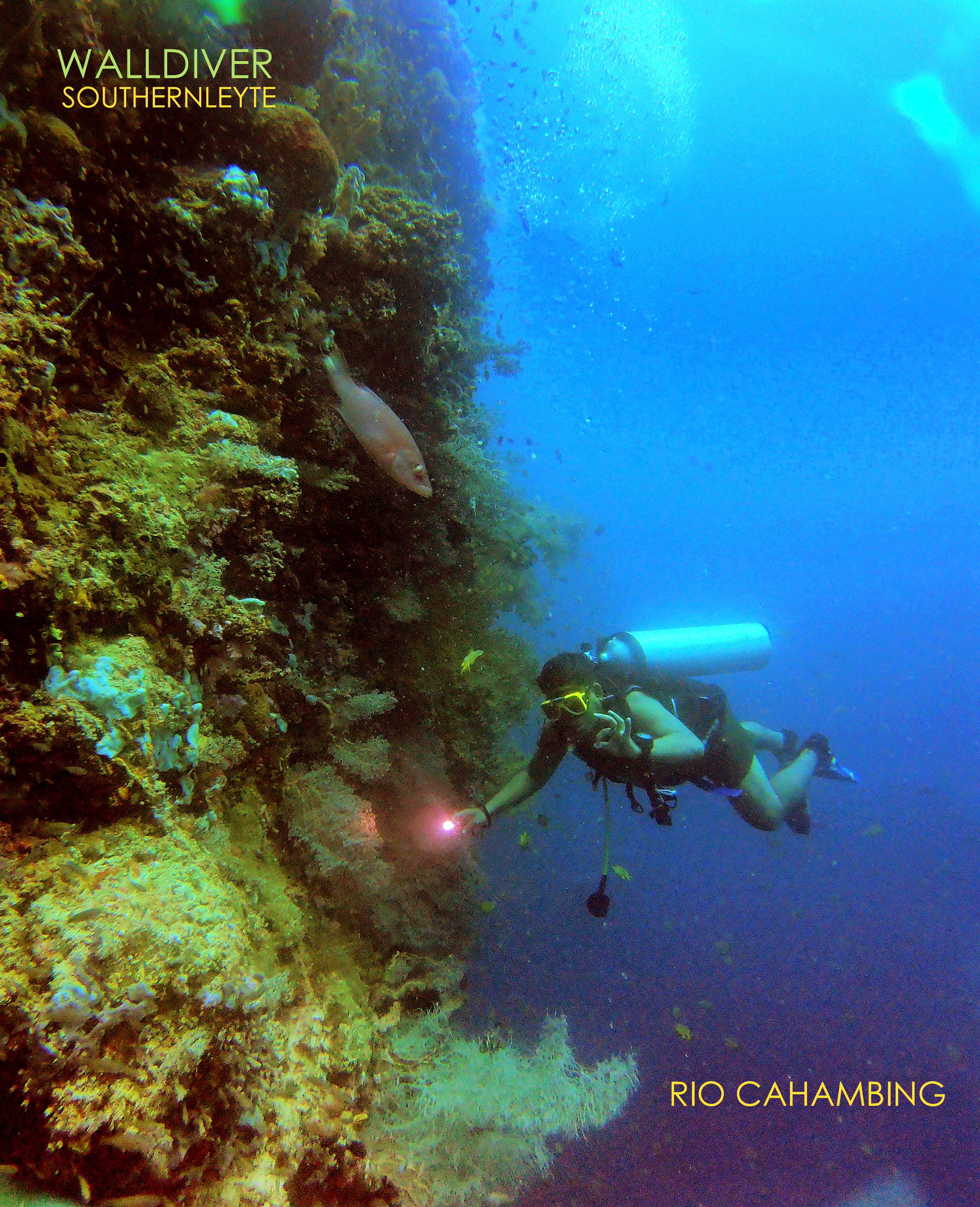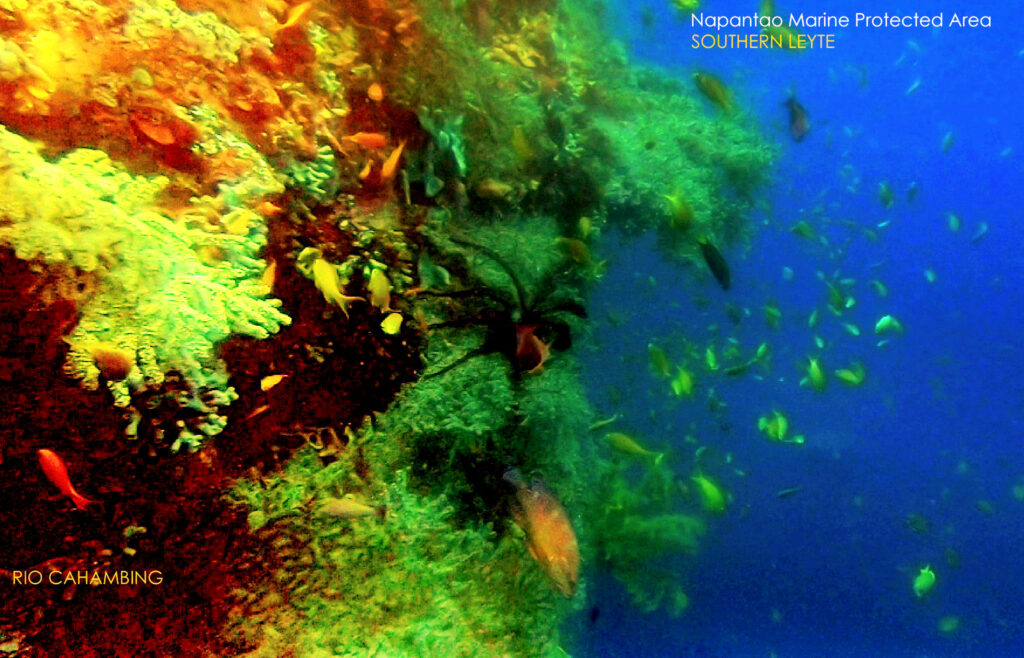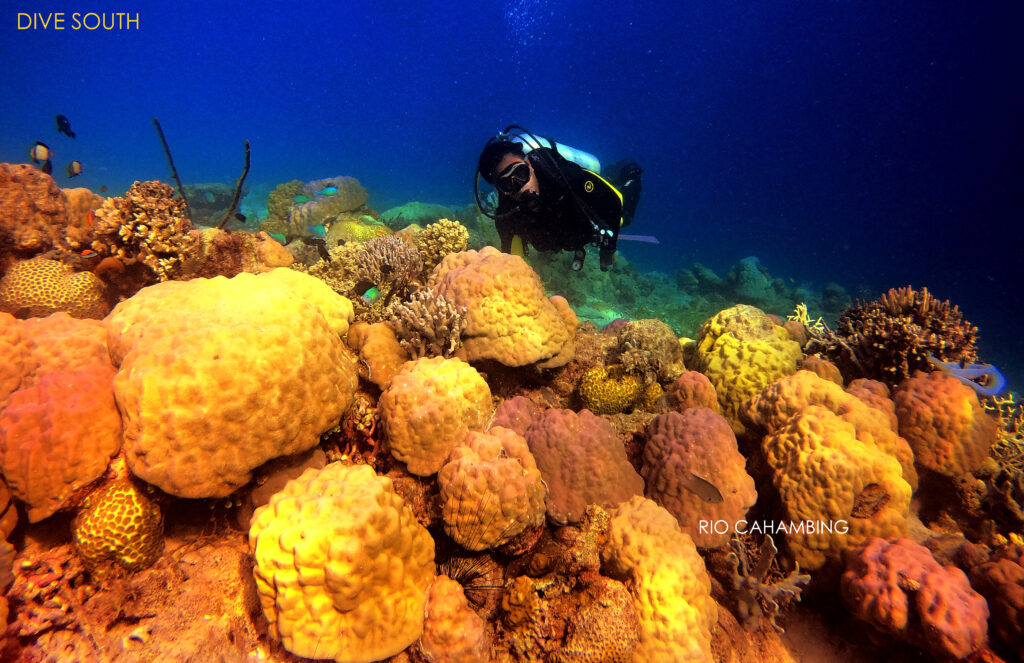Maasin City – The provincial government of Southern Leyte has released a partial report on the damage to reef areas caused by Typhoon Odette. The documentation and assessment was done in four (4) prime dive sites, which are Marine Protected Areas (MPA), in the three towns of San Francisco, Hinundayan and Hinunangan.
In San Francisco, the assessment was done in Napantao and Punta; in Hindundayan it was in Ambao and in San Pedro Island in Hinunangan.
Some of the best coral reefs in Southern Leyte are found in San Francisco principally because of the presence of the MPA’s in Napantao and Punta.
In the Napantao MPA the under water documentation showed that the world-famous walls are intact, but much of the damage was in the depths of 12 meters down to the shallows. Most those wiped out were branching corals and other coral species in the reef crest (12-15 meters) just before the start of the walls. More than 90% of the hard corals, mostly the branching species, were wiped out down to the shoreline and created a beach of coral rubbles. Fortunately, some species like a marine turtle and other coral fishes continue to inhabit in the MPA.
The Punta MPA, which was established after the tragic Punta Landslide, used to host some of the most healthy branching corals, table corals and other coral species in Southern Leyte and home to a huge variety of fish and invertebrates. However, because of its relatively shallow location most of its corals grew at less than 12 meters deep, the Punta MPA was virtually wiped out by the storm surge and ended up as dead coral fragments and rubbles on the shoreline.
Despite the damage, some coral fragments and massive corals were able to survive and coral fishes continue to inhabit the MPA giving hope that in a few years it will recover naturally.
In the town of Hinundayan, the Ambao MPA, which has a shallow location of less than 15 meters deep, more than 90% of coral cover were wiped out. There are a few patches of soft corals and massive corals but what remain are coral boulders that will take years before they can colonize “recruits” by natural means. Within the sorry a state of the once very-healthy MPA in Ambao some marine species survived and continue to inhabit the reef. There are still some stretches of sea grasses that will serve as nursery for fish fry in the area.
In the town of Hinunangan, the San Pedro Island MPA was spared by the storm surge that much of its coral cover remain intact. Unfortunately, some reef areas around the island suffered coral damage due to debris caused by the storm. The recent Crown of Thorns (COTS) infestation in the early quarter of 2022 had been addressed by manual extraction and injection. The dives were coordinated with Hinunangan Mayor Sonny Fernandez and San Pedro Island Punong Barangay Sanny Matunog.
The documentation and assessment of the damage to coral reef areas was done by CRM/Marine Tourism consultant Rio Noel E. Cahambing and dive volunteer Dag Navarette.





